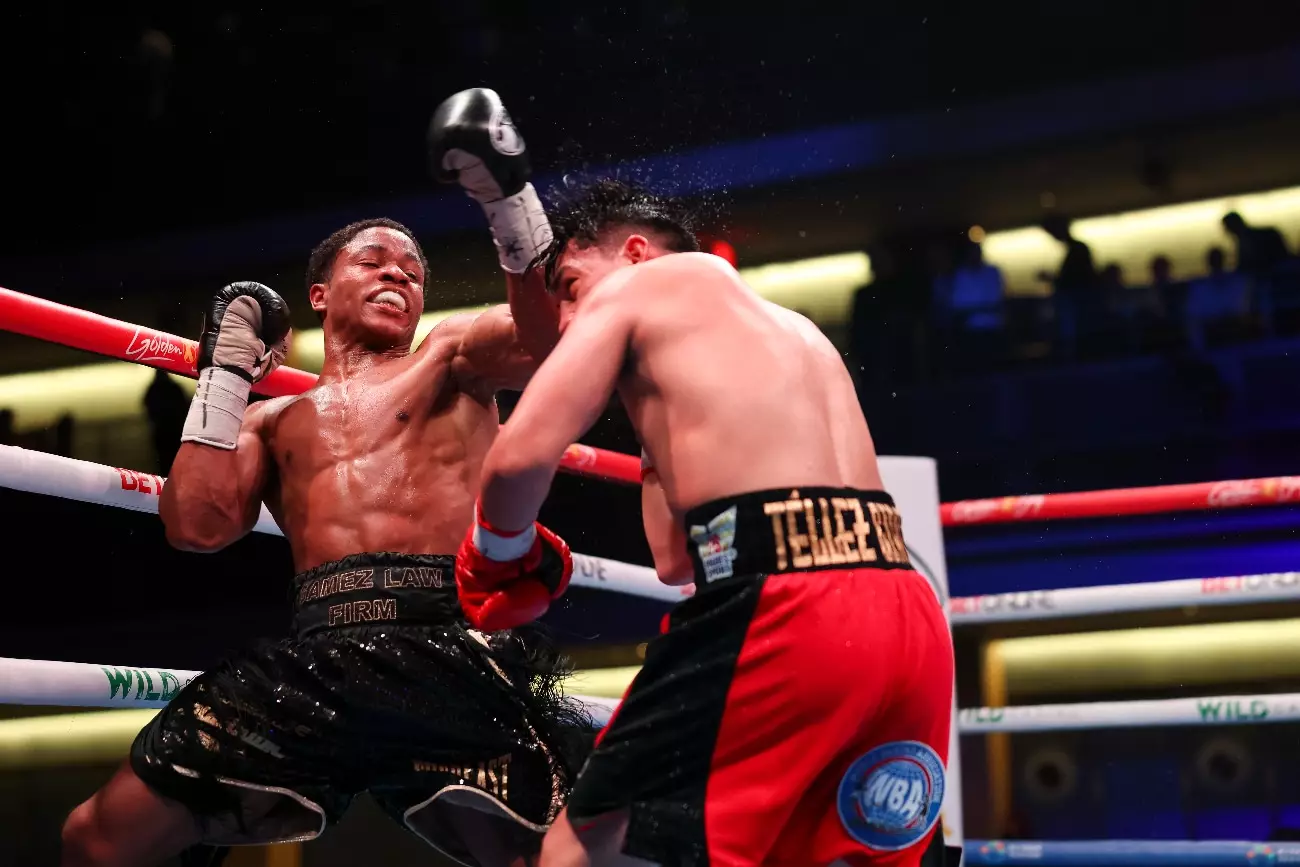Oscar De La Hoya, a legendary figure in the boxing realm, expressed his concerns regarding Floyd ‘Kid Austin’ Schofield Jr.’s decision to challenge Shakur Stevenson for the WBC lightweight title. De La Hoya, who has enormous experience in handling young talents, believes that Schofield should have opted for more development before stepping into such a demanding fight. At just 22 years old, Schofield has displayed an impressive record of 18 wins, with 12 of those coming by way of knockout. However, De La Hoya elucidates that while Schofield possesses the potential to secure a victory through his jab, pressure, and ability to fight tall, the undertaking against an elite pugilist like Stevenson might be premature.
De La Hoya underscored that he had a strategic plan in place to nurture Schofield’s talent. However, the young contender and his father, Floyd Sr., were resolute in their pursuit of the championship bout against Stevenson. This reflects a growing trend in boxing where athletes are eager to chase fame and fortune, often at the expense of careful strategic development. One can sense the tension between traditional career progression and the modern fighter’s ambitions, which often prioritize immediate opportunities over long-term growth.
The much-anticipated match between Schofield and Stevenson is slated for February 22nd, as part of the undercard for Artur Beterbiev’s rematch with Dmitry Bivol in Riyadh, Saudi Arabia. Live coverage will be available on DAZN, drawing a significant audience as two spirited contenders clash in the ring. De La Hoya acknowledged that despite potential pitfalls, he admires Schofield’s tenacity and the “throwback” mentality that embodies a fighter willing to face the very best contenders available. This dedication naturally captivates the imagination of fans and analysts alike; yet, the question remains— is this mindset truly beneficial for a fighter in the long haul?
In his analysis, De La Hoya pointed to Stevenson’s recent injury as a possible tactical advantage for Schofield. Acknowledging the fragile state of Stevenson’s surgically repaired hand, De La Hoya suggested that Schofield should employ relentless pressure to exploit this weakness. Given Stevenson’s nuanced boxing style, characterized by evasive footwork and an intricate defensive technique known as the “Philly shell,” Schofield must rely heavily on a well-executed game plan that emphasizes aggressive tactics, particularly with his jab.
For Schofield to capitalize on this opportunity, a multifaceted strategy is vital. De La Hoya stressed the importance of maintaining a tall stance and utilizing a consistent jab—cornerstones in grappling with Stevenson’s defensive style. Schofield must avoid the trap of crouching too low, which would grant Stevenson the leverage to land effective counters. By fighting tall and employing a high-pressure situation, Schofield can disrupt Stevenson’s rhythm and limit his comfortable movement, which has been key to several of Stevenson’s victories.
The challenges ahead for Schofield are not trivial. He must channel his explosive speed, exceptional footwork, and boxing IQ to level the playing field against Stevenson, who thrives off counterattacks and ring control. Historical analyses of Stevenson’s toughest bouts underline a critical component: the need for opponents to effectively cut off the ring. While fighters like Edwin De Los Santos and Jeremiah Nakathilia have pressured Stevenson effectively during their encounters, they ultimately faltered due to an inability to restrict Stevenson’s lateral movement.
De La Hoya’s observations hint at a broader truth within boxing today: the interplay of financial opportunities and career development paths. The Schofield camp’s push for this fight suggests that they see it as a lucrative moment—a golden opportunity to secure a significant payday by taking on one of the best in the division. While the allure of high-stakes bouts is undeniable, this approach raises questions about the impact on a fighter’s long-term trajectory.
Surely, there are valid arguments on both sides. The financial aspect can accelerate a fighter’s maturation and provide immediate stability; however, a hasty jump into elite-level competition can lead to long-lasting repercussions if the fighter is unprepared. Thus, the dilemma for Schofield now revolves around balancing immediate rewards against the sacrifices of thorough development and gradual skill enhancement.
Oscar De La Hoya’s insights into Schofield’s ambition and the upcoming title fight with Shakur Stevenson reveal a nuanced landscape where youthful courage and the fierce desire for recognition clash with the wisdom of strategic foresight. Whether ‘Kid Austin’ can transcend these complexities remains to be seen, but one thing is for certain—the impending contest promises to be a riveting chapter in contemporary boxing history.

